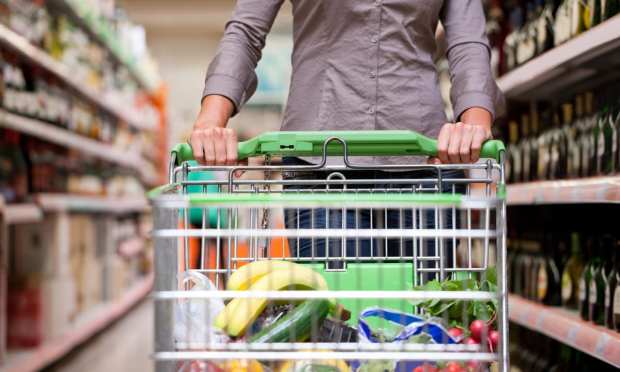Consumer Grocery Buying Shifts To Indulgent

Last year at this time, finding a roll of toilet paper on a supermarket shelf felt like winning the lottery. Items that shoppers would have taken for granted in February — rice, pasta, hand soap — became sought-after commodities in March.
But one year after the COVID-19 pandemic set off a wave of panic shopping, consumer grocery habits have changed. That’s according to a Thursday (April 8) Wall Street Journal report, which found people are buying less at the grocery store, and what they are buying looks a lot different than what they were purchasing when the outbreak began.
Citing data from NielsenIQ, the news outlet reported that sales of fast-moving consumer products in the four weeks through March 21 had fallen 10 percent in Europe’s five largest markets from the same period in 2020. And the U.S., “where so-called pantry loading was more intense,” sales of such products had fallen 16 percent.
During that period, the fastest growing consumer products in Europe were chocolate novelties — possibly due to Easter, which fell early this year — along with Champagne, tequila, premixed alcohol and prepared coffee. In the U.S., sales of prepared cocktails and Champagne rose 69 percent and 78 percent respectively.
Companies that make last year’s sought-after staples will have a tough time maintaining last year’s skyrocketing growth. Sales of toilet paper in the U.S. were down 54 percent over last year, 27 percent for hand sanitizer. In Europe, sales of bleach and soap fell as well.
“Although demand for hygiene products is higher than before the pandemic, cleaning brands belonging to the likes of Reckitt and Domestos-owner Unilever will start to look like underperformers,” the Journal writes.
This isn’t the only way spending has shifted. As PYMNTS reported this week, eCommerce sales rose more than 56 percent during the pandemic.
“It’s a continuation of what we’ve seen” over the past several months, Mastercard Senior Adviser Steve Sadove said in an interview with PYMNTS. “We’ve seen eCommerce go from 12 percent of retail to close to 20 percent of retail. And what’s happening is that despite the opening of more stores [amid vaccine rollouts], you’re seeing a continued momentum on the eCommerce side of the business.”
